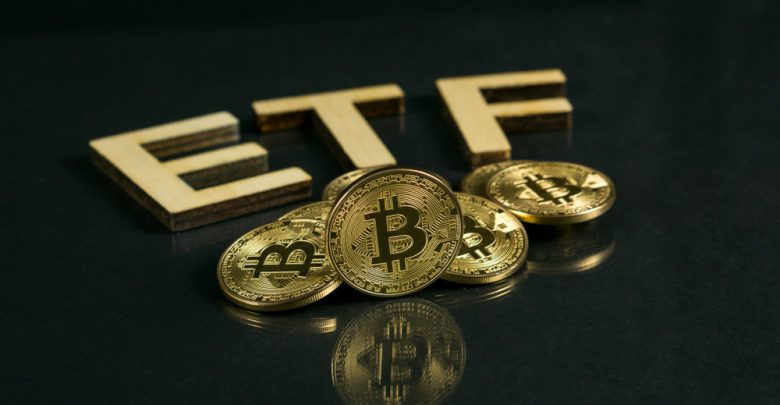Can BTC’s Volatility Be Tamed with a Short ETF?

BTC has undeniably revolutionized the digital finance landscape since its introduction in 2009. It has triggered a shift in conventional financial systems and sparked conversations about decentralization, peer-to-peer transactions, and cryptographic security. One of Bitcoin’s defining features is its pronounced volatility, which has sparked ongoing discussions among investors, economists, and market analysts. This guide delves into the question of whether a Bitcoin Short ETF could be a solution to Bitcoin’s volatility.
Deciphering Bitcoin’s Volatility
Volatility is the statistical measure of the variation of returns for a particular security or market index. In layperson’s terms, it signifies the extent to which the price of an asset, such as Bitcoin, rises or falls for a set of returns. High volatility suggests significant price variability, which market participants may view as an increased risk. On the other hand, low volatility indicates less price variability or more stable prices, which is a lower-risk scenario.
Grasping the volatility of Bitcoin necessitates a deep dive into its historical journey. Ever since its inception in the digital world, the value of Bitcoin has experienced substantial fluctuations. Notable instances include its remarkable ascent to nearly $20,000 in December 2017, swiftly followed by a sharp descent to around $3,200 just a year later. These drastic shifts in price underscore Bitcoin’s inherent volatility.
Several factors contribute to Bitcoin’s volatility. Firstly, the impact of supply-demand dynamics is significant. Bitcoin’s supply is fixed and gradually increases over time, while various factors, including investor sentiment, regulatory news, technological developments, and broader economic indicators, influence its demand. When demand outpaces supply, Bitcoin’s price surges, and when the market falls, the price drops, leading to pronounced volatility.
Secondly, the speculative nature of Bitcoin investments plays a role in its price movements. Speculation often has an amplified impact on the Bitcoin market due to its relative newness and the high level of uncertainty about its future.
Moreover, market sentiment and investor behavior significantly influence Bitcoin’s price. Positive news can trigger buying frenzies that rapidly inflate Bitcoin’s price, while negative information can spark selling sprees that drastically lower its price.
Lastly, technological changes and potential security risks significantly affect Bitcoin’s volatility. As Bitcoin is a technologically complex asset, any significant updates or concerns about its protocol, transaction speed, security, or scalability can substantially impact its price.
Implications of Bitcoin’s Volatility
The fluctuating nature of Bitcoin has far-reaching consequences, influencing individual investors as well as the broader economic environment. On a microeconomic level, this volatility brings a spectrum of risks and opportunities for those engaged in Bitcoin transactions.
For traders, heightened volatility can result in substantial gains if handled prudently. Swift price shifts enable traders to purchase Bitcoin cheaply and offload it at a higher price within a relatively brief period. However, this profit potential is counterbalanced by a corresponding risk factor. The volatility enabling large gains can also trigger significant losses if the price shifts unfavorably and the trader fails to offload Bitcoin before the price plummets.
From an investor’s viewpoint, particularly those who perceive Bitcoin as a long-term value reserve, volatility can breed substantial uncertainty. A vital feature of a dependable value reserve is its capacity to maintain its worth over time. Bitcoin’s fluctuating nature challenges this, as its value can swing drastically over short intervals, generating instability that can dissuade risk-averse investors.
Moreover, volatility can impact Bitcoin’s role as a transaction medium. For Bitcoin to be adopted as a prevalent payment form, transaction parties need to trust its value. However, this trust can be eroded by volatility, as the value of the Bitcoin received in a transaction may diminish shortly after the transaction has been finalized.
Bitcoin’s volatility can have macroeconomic effects in a broader economic context, especially considering its increasing incorporation into the global financial system. Bitcoin’s high fluctuations can contribute to financial instability, particularly if financial products linked to Bitcoin, such as derivatives or ETFs, become familiar.
Furthermore, if entities with substantial financial commitments, like corporations or governments, possess large Bitcoin quantities, price swings in Bitcoin could affect their ability to fulfill these commitments. This could initiate a domino effect of defaults that could influence the broader economy, a situation referred to as systemic risk.
Additionally, extreme volatility can draw regulatory scrutiny, potentially altering Bitcoin’s governance. Regulatory changes can have widespread effects, impacting everything from individual Bitcoin owners to enterprises centered around Bitcoin and blockchain technology.
Understanding ETFs
An Exchange Traded Fund is an investment fund traded on stock exchanges, much like individual stocks. Their purpose is to mirror the performance of a specific index, sector, commodity, or asset. ETFs can encompass a wide range of underlying assets, from conventional investments like stocks, bonds, and commodities, to more specialized holdings such as cryptocurrencies or specific sectors.
There are several defining features of ETFs. One key characteristic is that ETFs can be traded throughout the day during regular trading hours, unlike mutual funds, which can only be sold at the end of the day at the net asset value price. This gives ETF investors greater flexibility, enabling them to respond swiftly to market changes.
Moreover, ETFs typically offer investors access to a diversified portfolio. An ETF can encompass a variety of assets by replicating a specific index or sector. This allows investors to achieve broad market exposure through a single ETF, mitigating some risks associated with investing in individual assets.
However, like all investment instruments, ETFs also come with their own set of risks. The degree of risk is contingent on the ETF’s underlying assets. For example, an ETF that tracks a volatile sector or asset class may display similar volatility. Thus, while ETFs offer a way to reduce risk through diversification, they still need to eradicate it.
Furthermore, ETFs are exposed to market risks. As securities are traded on exchanges, ETF prices can vary throughout the trading day due to the interplay of supply and demand in the market. These fluctuations can lead to a discrepancy between the price of the ETF and its net asset value, a phenomenon known as the NAV premium or discount.
The Concept of Bitcoin Short ETFs
Understanding the fundamental concept of short-selling is crucial to grasp the workings of a Bitcoin Short ETF. This trading approach involves borrowing an asset, usually from a broker, and selling it in the market at its present price. If the asset’s price drops, the short-seller repurchases the asset at a lower cost, returns the borrowed asset to the lender, and keeps the difference as profit.
In the case of a Bitcoin Short ETF, the fund adopts a short stance on Bitcoin to profit from potential declines in Bitcoin’s price. Unlike direct short-selling, which necessitates significant capital and a high tolerance for risk, a Bitcoin Short ETF enables investors to adopt a bearish view of Bitcoin without directly shorting the cryptocurrency.
The Bitcoin Short ETF inversely mirrors Bitcoin’s performance, implying that if Bitcoin’s price drops, the ETF’s value increases, and vice versa. It offers a way for investors to capitalize on Bitcoin’s volatility, especially during bear markets or downward price trends. Therefore, it acts as a hedging tool against Bitcoin’s volatility, potentially minimizing the risk of loss during unfavorable market conditions.
However, it’s important to remember that shorting carries its risks. If Bitcoin’s price increases, the value of the Bitcoin Short ETF will fall. This indicates that investors could face substantial losses if Bitcoin’s price moves contrary to their predictions.
Standard ETFs vs. Bitcoin Short ETFs
Standard ETFs are designed to mirror the performance of a specific index, sector, commodity, or asset, allowing investors to access a diversified portfolio without purchasing each component separately. This diversification is their key advantage, as it can mitigate investment risk.
In contrast, Bitcoin Short ETFs have a more specialized objective. They don’t aim to offer exposure to a diversified portfolio but to profit from a decline in Bitcoin’s price. Hence, the central role of a Bitcoin Short ETF is not diversification but capitalizing on volatility and potentially providing a hedge against Bitcoin’s price fluctuations.
Standard ETFs and Bitcoin Short ETFs present distinct routes to profitability when considering potential gains. The former generates returns based on the overall performance of the assets it mirrors. On the other hand, a Bitcoin Short ETF yields returns when Bitcoin’s price falls. Therefore, the profitability of a Bitcoin Short ETF is inversely related to Bitcoin’s price. In contrast, the profitability of a standard ETF is directly related to the performance of the tracked assets.
In terms of risk, both kinds of ETFs share certain commonalities. They are both susceptible to market risks, with their values subject to fluctuations based on market trends. However, the risk associated with a Bitcoin Short ETF is intrinsically tied to the price movements of Bitcoin, potentially making it more volatile than numerous conventional ETFs. Additionally, a surge in Bitcoin’s price could lead to significant losses from a Bitcoin Short ETF, as the ETF’s value would inversely decline in such a scenario.
Standard ETFs and Bitcoin Short ETFs fulfill different roles in an investment portfolio. Standard ETFs are typically used to achieve broad market exposure, diversify a portfolio, or target specific sectors or asset classes. In contrast, Bitcoin Short ETFs are more specialized. They could be used for speculative trading or as a hedge for those exposed to Bitcoin’s price fluctuations.
Can a Bitcoin Short ETF Mitigate BTC’s Volatility?
After exploring the function and purpose of Bitcoin Short ETFs, the remaining question is whether these financial tools can effectively counteract Bitcoin’s volatility.
At first glance, a Bitcoin Short ETF could be a viable strategy for investors looking to safeguard against Bitcoin’s price plunges. A Bitcoin Short ETF could offer a safety net during bear markets or steep price declines by capitalizing on downward price trends. This could potentially make Bitcoin more enticing to conservative investors or those looking for methods to balance their cryptocurrency exposure.
However, a Bitcoin Short ETF’s allure comes with its challenges. Primarily, the act of shorting carries inherent risks. If Bitcoin’s price escalates, the Bitcoin Short ETF’s value will diminish. Investors could be exposed to considerable losses, particularly given Bitcoin’s historical trend of swift and sizeable price surges.
Furthermore, there’s the matter of timing. To profit from a Bitcoin Short ETF, investors must accurately time their entry and exit points in line with Bitcoin’s price fluctuations. Given the unpredictable nature of these fluctuations, achieving this could be a daunting task for many investors.
Another critical aspect to ponder is the impact of a Bitcoin Short ETF on Bitcoin’s market behavior. If Bitcoin Short ETFs become widely accepted, they could contribute to downward pressure on Bitcoin’s price during bearish cycles, potentially amplifying volatility rather than alleviating it.
Finally, regulatory considerations must be addressed. The endorsement and oversight of these ETFs fall under the purview of financial regulatory bodies, which may harbor reservations about these financial tools due to the inherent risks involved. Such a regulatory landscape could pose hurdles to the accessibility and functioning of Bitcoin Short ETFs.
Regulatory Landscape
At present, the regulatory landscape for Bitcoin differs significantly across jurisdictions. Some nations, such as El Salvador, have embraced it as legal tender, while others, like China, have imposed stringent regulations that heavily curtail Bitcoin-related activities. This inconsistent regulatory environment and Bitcoin’s inherent global nature add to its volatility.
The regulatory landscape surrounding Bitcoin Short ETFs could be more clearly defined. Central financial authorities such as the U.S. Securities and Exchange Commission (SEC) have not approved any Bitcoin Short ETFs. The SEC’s historical apprehensions about Bitcoin’s fluctuating prices and the potential for market manipulation have significantly influenced its stance on Bitcoin ETFs.
Nonetheless, the regulatory climate still needs to be fixed and has the potential to change. With the increasing incorporation of Bitcoin and other digital currencies into the financial ecosystem, regulatory bodies may reevaluate their views on instruments like Bitcoin Short ETFs.
Still, potential regulatory changes could swing in either direction. A more lenient regulatory environment could pave the way for the approval of Bitcoin Short ETFs, providing investors with a novel tool for managing their exposure to Bitcoin’s volatility. Conversely, more stringent regulations could further restrict the options available to investors.
Finally, it’s crucial to note that regulations usually respond to market trends instead of predicting them. As such, any alterations in the regulatory environment are likely to be propelled by continuous transformations in the cryptocurrency market and the broader financial ecosystem. This highlights the importance for investors to keep abreast of regulatory shifts and contemplate how these might influence their investment approaches.
Conclusion
Addressing Bitcoin’s volatility may not have a one-size-fits-all ‘solution.’ Instead, market participants’ ongoing adaptation, innovation, and resilience suggest that a range of solutions will continually redefine our approach to this pioneering digital asset. Looking forward, the role of Bitcoin Short ETFs in this evolutionary journey will undoubtedly be a fascinating story to track.
Tokenhell produces content exposure for over 5,000 crypto companies and you can be one of them too! Contact at info@tokenhell.com if you have any questions. Cryptocurrencies are highly volatile, conduct your own research before making any investment decisions. Some of the posts on this website are guest posts or paid posts that are not written by Tokenhell authors (namely Crypto Cable , Sponsored Articles and Press Release content) and the views expressed in these types of posts do not reflect the views of this website. Tokenhell is not responsible for the content, accuracy, quality, advertising, products or any other content or banners (ad space) posted on the site. Read full terms and conditions / disclaimer.







